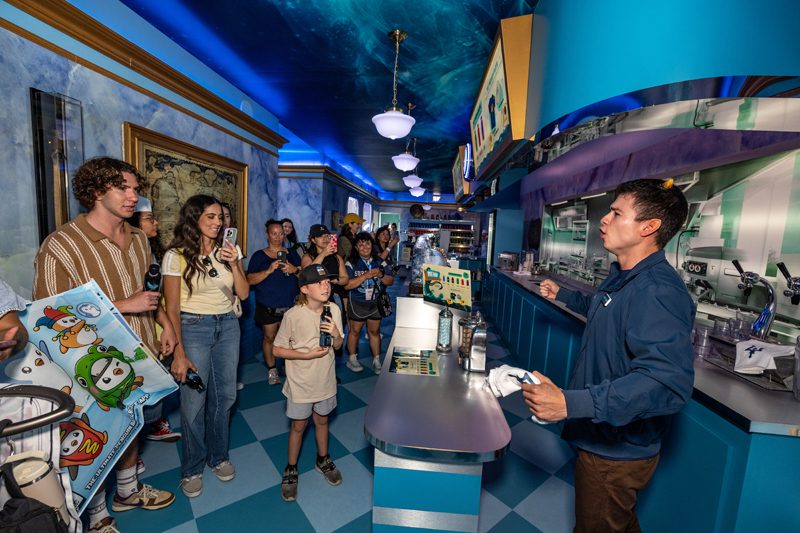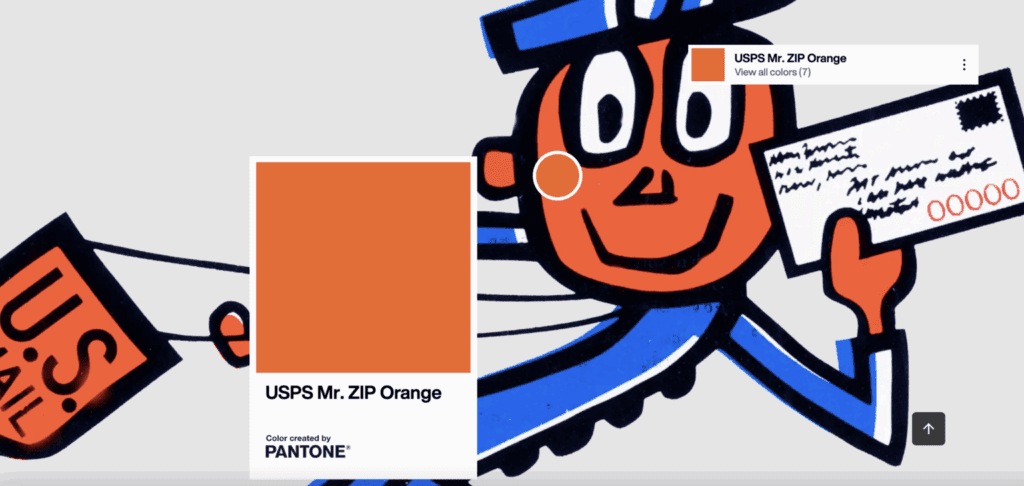
A PROFESSIONAL BASKETBALL COURT IS 94′ LONG BY 50′ WIDE. BUT THE PLAY SPACE FOR THE PHOENIX SUNS’ MARKETING EFFORTS IS MUCH BIGGER THAN THAT.
The Arizona NBA franchise is an all-star when it comes to connecting with fans across a variety of media, from sponsorships and events to all aspects of social media.
In the past four seasons, the team was fortunate in that all the seats at the US Airways Center sold out. “We didn’t have to do a ton of outside advertising, so we weren’t spending a lot of actual ad dollars in the market,” notes Niki Adams, senior director of marketing for the Suns.
Still, the Suns put a considerable amount of effort into keeping fans engaged — and ready to fill seats. Annually, the team spends about 15% of its marketing budget online. From a single-game perspective, online marketing accounts for about 90% of ticket sales, with the remainder sold through the box office and Ticketmaster.
Approximately 70% of the Suns’ ad budget is garnered through ticket barter agreements with local media partners including TV, radio, outdoor and print. Cash is used for online campaigns and direct mail, plus traditional channels once trade allotments are exhausted.
The Suns have about 110 marketing partners, close to half of whom have digital inventory or participation with the team, notes Jeramie McPeek, vice president of digital for the Suns. Some might just have banner ads, while others might be a presenting partner for a whole section of the Web site. Right Guard, for example, presents the Flash-animated player section, while Verizon Wireless presents the mobile area.
Unique one-of-a-kind promotions are also created for partners. In March, an 18-hour dribbling contest was held outside the arena. Twenty-five fans participated in the contest, which was sponsored by the Health & Wealth Raffle, a charity that raises money for St. Joseph’s Hospital and Barrow Neurological Institute. The entire event was streamed online, along with an 18-hour chat on the Suns home page. In one day, $640,000 worth of tickets were sold. “It was huge success,” says McPeek.
IN THE GAME
The Suns’ first foray into social media was in the spring of 2007. At a league-wide meeting — where the Suns were given team site of the year honors — the NBA told teams to consider things like starting MySpace pages and YouTube channels. McPeek rejected the idea at first.
“We wanted people to come to our site, to be exposed to sponsors’ ads, ticket offers, etc.,” he says.
This led to the creation of PlanetOrange.net, the Suns’ own social network, connected to their main NBA.com/Suns site. At PlanetOrange fans could create a profile, blog, put up videos, participate in discussions and utilize other social features. Today, obviously, a lot of that activity has migrated to Twitter and Facebook. But the team still has about 16,000 PlanetOrange members, who get particularly active around key times like the playoffs.
The NBA basketball franchise first joined Twitter in Nov. 2008. Adjusting to the social medium was a departure from the traditional public relations model, notes McPeek.
“In the past we just broadcast information to fans,” he says. “It’s more two-way now. We spend a lot of time listening to our fans, answering questions and joining their conversations.”
The Suns use Twitter in a variety of ways. Quotes and anecdotes are tweeted by players and coaches from practices, locker rooms and the team bus. The PR department uses Twitter to pitch stories to local media, sometimes highlighting charitable work players do in the community.
“And [the game operations department] uses it to ask fans what type of music we should be playing in the arena,” McPeek says. “The Suns Dancers talk about appearances they’ll be doing around the town. Plus, the broadcast department uses Twitter to get questions from fans to answer on TV during the pregame show. Live tweets are also streamed onscreen during broadcast and on the big screen in the arena.”
Players, however, aren’t allowed to tweet during games. “There were a couple of players, including our former center Shaquille O’Neal, who tweeted at halftimes last season,” says McPeek. “Our coach didn’t have any problem with it — he even made a joke about it when he was asked — but I know that Milwaukee’s coach was angry when one of his players did it, so the league did institute that policy.”
At first, there was concern about having so many people representing the Suns brand out on the virtual front line. “But over time, we’ve set up an in-house process,” McPeek says. “If employees want to get on Twitter and represent the organization, I’ll act as kind of a Twitter mentor, teaching them the features of Twitter and how important it is to use common sense, and not be tweeting out things that are negative or that reveal important business info that we shouldn’t be revealing.
“And truthfully, our employees on Twitter are Suns veterans and know to put the interests of the organization first. So it’s a great chance to have them out there talking about the team and spreading Suns fever.”
Next Page: Team Building
TEAM BUILDING
McPeek says he’s heard from a lot of people who say they were very casual basketball fans before Twitter. “But now because they can connect with players and hear behind-the-scenes stories, they feel more connected with the team and watch all the games. It’s grown our fan base in a different way.”
And those fans are being rewarded with more than just amusing anecdotes. The second annual Suns Tweet Up was held in December, and about 250 Twitter followers took advantage of an offer for a discounted ticket, a pre-game meal, and a special T-shirt commemorating the event. Post-game, several players sat down for a private Q&A with the group. In March, the team held its first special event for Suns’ Facebook fans (there were over 81,000 at press time; close to 25,000 follow the team on Twitter).
Beyond Twitter, mobile is a part of the Suns’ marketing mix. The team has multiple subscription lists, including one for fans wanting news, promotional alerts, special ticket offers for all US Airways Center events, season ticket holders and the Phoenix Mercury women’s basketball team.
KEEPING SCORE
Social media is primarily a brand-building and communications medium for the team, notes McPeek. But the Suns are keeping a close eye on analytics to see what is working, gauging the number of clicks for an offer or message, and looking at the number of ticket purchases generated by different approaches such as text alerts versus e-mail versus offers on the Web site.
As for things like the blogs (written by Suns staffers, as well as outside contributors like sportswriter Sam Amico and comic book writer/Suns superfan Adam Beechen), the benefit of the content is its ability to make the site a more desirable place for fans to regularly visit. “It makes the site more valuable to advertisers and helps create visibility for special offers — it all kind of works together,” McPeek says.
“In today’s environment, advertisers and partners are being a lot more critical about where they spend their money,” says Adams. “They’re driving their decisions more on analytics and less on instinct. They want to know where their money is being spent and how it is paying off.”
At first, it was difficult to get people to buy in for the concept of participating in social media activities like tweeting. “A lot of people thought it was a waste of time, just playing on the Internet, and that we should spend our work hours doing important things and not just chatting with people,” McPeek says.
But gradually, people started to try out the social space. Then, when star players like Shaquille O’Neal started tweeting in Nov. 2008, “we thought, ‘We better figure out what this is if he’s on there tweeting about his life’,” says McPeek. “We quickly realized what a powerful tool it was, to instantly get feedback.”
Social media quickly became an online focus group with fans. “And those who embraced it within the company passed it on to other brand ambassadors and got them to jump on board.”
For more on the Suns’ marketing strategies, visit https://chiefmarketer.com/advertising/0326-phoenix-suns
NIKI ADAMS, SENIOR DIRECTOR OF MARKETING / JERAMIE MCPEEK, VICE PRESIDENT OF DIGITAL OPERATIONS / PHOENIX SUNS
Next Page: Holding Court with Fans
Holding Court with Fans

From a mainstream marketing perspective, the Phoenix Suns are on the bench during the off-season.
“We don’t do a lot of actual advertising once the season stops,” says Niki Adams, the team’s director of marketing. “We do a lot of our planning and strategizing for the upcoming season in June and July, and then start ramping back up in late August.”
But that doesn’t mean the Suns are letting their CRM muscles atrophy. This past summer, the team used the off-season to host special events and keep Suns fever hot.
For example, the Suns worked with marketing partner Southwest to host a cocktail party for 150 of the airline’s top clients and their families in the Phoenix market. The Suns’ gorilla mascot made an appearance, and attendees got to shoot baskets on the court, tour the locker rooms and meet Suns Dancers and alumni. “It was a behind-the-scenes peek that a lot of people don’t get,” Adams says.
At press time, the Suns were on their way to the playoffs, so the marketing message could play to that positive news. But sports fans can be fickle, depending on how a team is performing.
“If you’re selling Coke or Budweiser, you’re selling product attributes,” says Adams. “But in sports, you have to get creative. Our team president used to say that two-time MVP Steve Nash made us all look a lot smarter, because the stadium was always sold out.”
Special promotions and special packaging — like family days or guys’ nights out, with add-ons like free T-shirts or caps, or all you can eat nachos — are the order of the day to lure fans to games when the team isn’t doing as well, she notes.
“But when you’re sold out, you don’t necessarily have to execute those packages, because the performance of the team sells itself.” — BNV
NBA Keeps Hands Off the Ball

While teams like the Phoenix Suns do have to submit marketing materials to the NBA for approval, the league does give teams significant advertising autonomy.
“They want to see our ideas for campaigns, and then get back to us to approve, disapprove or ask more questions,” says Niki Adams, the Sun’s director of marketing. “But they don’t give us a lot of pushback.”
In the last few years, the NBA has done initiatives under the “Where Amazing Happens” tagline, promoting multiple teams in television spots and on the nba.com/amazing Web site.
“The NBA does a good job of leveraging the league as a whole,” says Adams.
Jeramie McPeek, the Suns’ vice president of digital, notes that the NBA online marketing strategy is a hybrid of the approaches of Major League Baseball (where teams have zero control over their individual sites) and the National Football League (where teams are on their own). There are restrictions as to what advertising teams can do in or out of network, but the leash is loose.
“Design-wise, we have a lot of freedom,” says McPeek. “But at the same time, there’s a great network. The NBA hosts our sites on their servers, we have access to their creative services department, and they provide stats, post-game videos and a lot of technical support.”
The Suns have been a league leader when it comes to digital; they were the first NBA team to launch an e-mail newsletter back in 1997. Today, the newsletter, which has over 50,000 opt-in subscribers, is published weekly to update fans about upcoming events and point them to Web site content they may have missed. It was initially used to distribute breaking news, but now Facebook, Twitter and text alerts take care of that service. — BNV
 Network
Network

